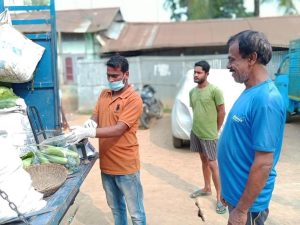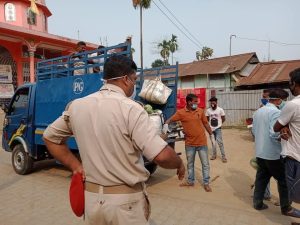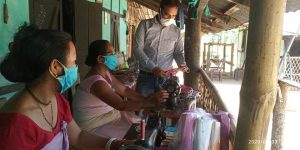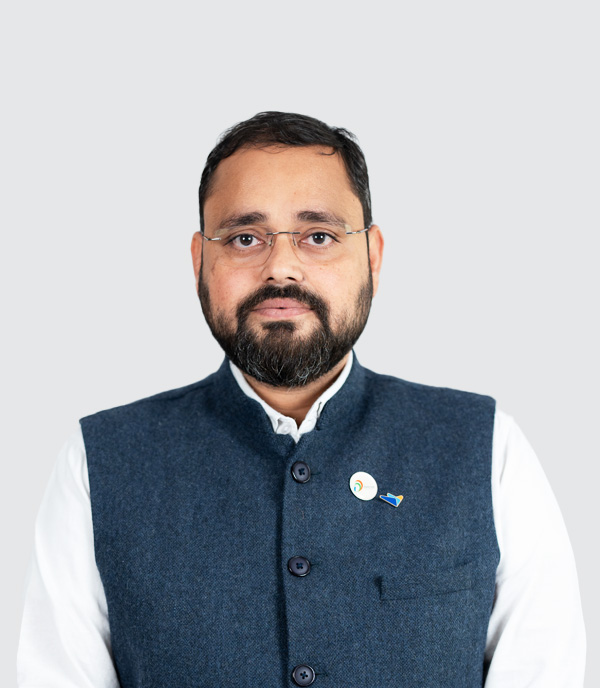COVID-19 management by local governments: Is there a mantra to follow?
by Akhand Tiwari, Mimansa Khanna and Nembiekmoi Gangte
Jul 17, 2020
5 min
Customer-centric policies and initiatives of the local government are crucial for the management of COVID-19. In India, aspirational districts are pioneering simple yet effective measures to address the immediate needs of the community. This note presents bottom-up measures taken in the Goalpara district, Assam
COVID-19 is yet to reach India’s 112 aspirational districts[1] in full force. The disease appears to be spreading first and most widely in concentrated urban areas. It is not surprising, therefore, that these largely rural districts have seen only 2% (610 cases in total as of early May, 2020) of cases so far, despite lower social development indicators. Yet that does not mean that these areas, home to more than 20% of the country’s population, have not been affected deeply by the global pandemic.
It is not hard to imagine the potentially devastating consequences of a pandemic of this nature for people who live in rural areas. Multiple aspects of economic and social vulnerability characterize their daily lives. To mitigate the repercussions of the pandemic, Aspirational Districts have been pioneering simple yet effective measures to solve the immediate needs of the community during the pandemic, which other districts across the country can use at scale.
So, how can aspirational districts mitigate the consequences of the pandemic while continuing to prepare a response to the potential arrival of more COVID-19 infections—or the future arrival of another pandemic? In our search for answers, we look at the approach taken in the Goalpara district in Assam. Goalpara is picturesque, located a few hours away from the state capital at Guwahati. The West and East Garo Hills districts of Meghalaya surround Goalpara on the south, while the mighty Brahmaputra River runs along the north. The following section identifies some of the bottom-up measures rolled out there thus far and looks at policies centered on engaging with the community, embracing digital channels, and solving immediate needs.
Engaging with the community
Goalpara has been quick to involve civil society, businesses, and the public in its COVID response. The district has organized community members to engage with vulnerable groups, mobilize the production of needed goods, and support the medical community.
Efforts include the launch of “Mission Goalpara Cares,” which has tasked teams of teachers and college students to call elderly residents regularly, inquiring after their physical and mental well-being, and determining if they need assistance from the government. The district has also deployed Nehru Yuva Kendra and Civil Defense volunteers to help manage the disbursement of direct benefit transfers under the Pradhan Mantri Jan Dhan Yojana at potentially crowded locations, such as banks and customer service points by maintaining social distancing measures.
Protective equipment, from sanitizer to masks, foot covers, and head covers have been put into production through the work of nearly 150 women who form part of self-help groups under the Assam State Rural/Urban Livelihood

Local retailers have been on-boarded to provide new home delivery services for essential goods. The District has also ensured that frontline medical workers receive hotel accommodation, free Wi-Fi service, and personalized “care kits” during their duty period. These medical professionals are involved in the treatment of patients and have been working away from their families. These measures have kept the morale of the medical workforce high during this stressful time. The district administration also ensured life insurance coverage of ASHAs, ANMs, GNMs, and cleaners in the district. The first premium was paid from the contributions from CSR partners and NGOs.
Embracing digital channels
The Goalpara administration has used its social media channels to disseminate information about the outbreak and lockdown restrictions. The pandemic and lockdown measures have also brought with them the need for new or expanded services with digital components, like the home delivery of groceries.

The district administration took several steps to overcome the initial resistance from shopkeepers. These include meetings, mentoring for the adoption of the new approach, and monetary incentives and vehicles for retailers to help them deliver services in the district.
Goalpara has also encouraged a “Learning from Home” initiative to revamp the ecosystem of public education in Goalpara. At the time of writing, this campaign engaged 1,500 teachers with 60 officials and benefited 10,000+ students. The administration established an official YouTube channel to promote learning where the modular learning videos based on the curriculum are consolidated, reviewed, and uploaded. A plan has been chalked out to make the channel more accessible to students with structured content. To make the digital adoption easier, teachers receive digital pedagogy training, courtesy UNICEF. The training courses includes the development, mapping, and delivery of the content. More than 90 teachers had been oriented on online safety, monitoring, and psychosocial health.
Solve immediate needs
Before community engagement and digital channels can be harnessed effectively for the benefit of the population, people must have their nutritional and health and hygiene needs covered. Here, Goalpara acted early to ensure the availability of food and essential items. Vans were deployed to each ward to sell vegetables, fruit, and milk on alternate days, and agreements were made with stores to make vegetables with longer shelf-life, like potatoes, onions, and ginger available. These measures were accompanied by public communication to ensure that information on the availability of essential goods was widely known and that panic around potential shortages did not arise.

Uncertainty has been a hallmark of the past weeks and months for many people over the world. Yet as districts like Goalpara act quickly to protect their populations from the worst effects of the pandemic, we have the opportunity to learn something important from their ideas and successes. Preparation for whatever will come can now be based on understanding how these measures have mitigated the effects of COVID-19 and the lockdowns for the most vulnerable. We can now learn how the measures can be further developed and refined to protect them now and in the future.
* MSC District Financial Inclusion Coordinator (DFIC) for PEFI project working in Aspirational District of Goalpara, Assam
[1] Aspirational Districts have been identified as pockets of under-development across the country and the Government of India is implementing a program to ensure their rapid transformation. Anchored by NITI Aayog, the Aspirational District has been instrumental in breaking the vicious cycle of low development and low motivation in the 112 under-developed districts of India.
 by
by  Jul 17, 2020
Jul 17, 2020 5 min
5 min


Leave comments